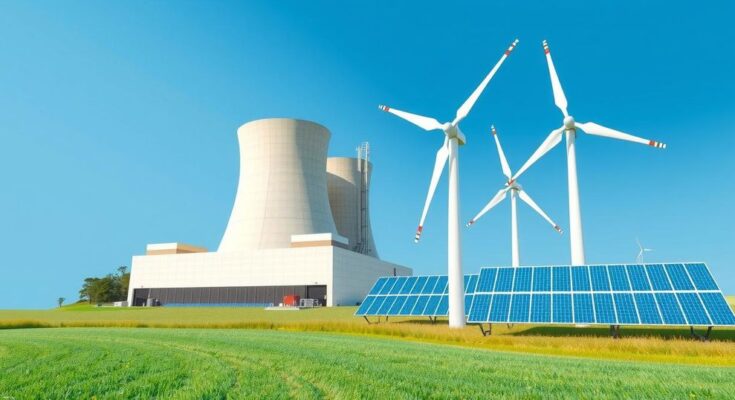The global energy arena is undergoing a significant metamorphosis as nations grapple with the intricate dynamics of nuclear power versus renewables like solar, wind, and hydro. Economic viability plays a pivotal role in shaping energy policies, thus necessitating a meticulous cost-analysis of these technologies. This article explores the Levelized Cost of Electricity (LCOE), the impact of government subsidies, and investment patterns across diverse regions, from the U.S. and Canada to Europe, the Caribbean, and China.
Evaluating energy sources requires a keen eye on LCOE, which reflects the comprehensive costs—construction, operation, maintenance, and fuel—of generating electricity over a plant’s lifetime. Notably, the U.S. Energy Information Administration pegged advanced nuclear LCOE at $110/MWh in 2023, projected to stay stable until 2050, while solar PV costs are forecasted to plummet from $55/MWh to $25/MWh, making renewables a more attractive option. Similar cost reductions are forecasted for wind and other renewables in various major markets.
The 2023 Renewable Power Generation Costs report highlights a consistent decrease in global average LCOE among renewables—solar PV notably dropped by 12% from the previous year. Onshore wind experienced a 3% decline, while offshore wind saw a 7% fall. In stark contrast, nuclear projects are beset by delays and rising costs, with the average construction time of reactors significantly lengthening, leading to further complications and overruns.
Many nuclear reactors are facing extended construction periods, as evidenced by the Mochovce-4 reactor’s 38-year timeline and ongoing delays in projects across several countries. The Hinkley Point C project in the UK exemplifies this trend, with costs soaring from an initial £16 billion to £34 billion due to legislative hurdles and delays, pushing its operational timeline to 2030.
Government subsidies significantly influence the energy market landscape. Although renewables are growing, investments in nuclear technologies have dwindled since the 1970s, reflected in the minor share of public R&D dedicated to nuclear. In contrast, renewable energy investments surged, partly driven by initiatives like the U.S. Inflation Reduction Act, which spurred tax credits for renewable projects, catalysing further growth.
In the Caribbean, renewable energy development faces unique challenges due to geographic isolation and limited capacity for large-scale projects. Recognising this, policymakers aim for a regional target of 47% renewable energy generation by 2027 while striving to mitigate the costs involved. Jamaica’s explorations into nuclear energy, despite being plagued by high costs and external dependencies, illustrate the complex landscape of energy strategies in the region.
Ultimately, the energy evolution between nuclear and renewables presents a complex tableau. Nuclear offers a steady, low-carbon energy source, balancing long-term viability against construction hurdles and radioactive waste management. Conversely, decreasing costs in renewables signal a promising pathway forward. The integration of both energy types into a cohesive strategy necessitates thoughtful investment, adept policy crafting, and innovative technological advancements, painting a future ripe with possibilities for sustainable energy independence.
The article examines the shifting global energy landscape, focusing on the economic comparisons between nuclear power and renewables like solar and wind. Key metrics include the Levelized Cost of Electricity, with renewables showing a downward trend in costs compared to nuclear. Government subsidies play a significant role in market dynamics, and the Caribbean’s unique challenges in renewable adoption are also highlighted. Ultimately, the balance between these energy sources is essential for a sustainable future.
This exploration of the energy landscape reveals stark contrasts between nuclear and renewable energy sources. While nuclear power promises stable baseload power, it struggles with rising costs and lengthy construction times. Renewables, on the other hand, are experiencing a rapid decrease in costs and greater adaptability. As nations navigate their energy futures, a balanced approach embracing both technologies, underpinned by supportive policies and smart investments, will be crucial for fostering a clean, resilient energy economy.
Original Source: www.forbes.com



